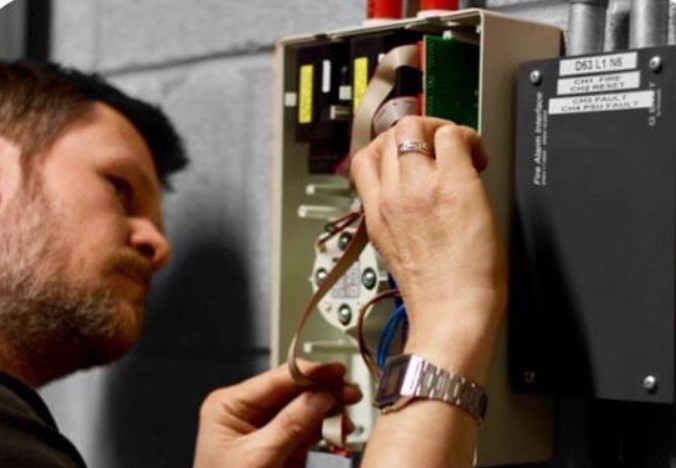Promising time for Global TransPark
I went over to the North Carolina Global TransPark in Kinston last week, because there are interesting things to see in a large industrial park with an 11,500-foot-runway and lots of jets.
It is an hour drive from my home on the Wake side of Johnston County, and that is significant. The state is turning U.S. 70 into Interstate 42, and it will run by the TransPark on its way from the Raleigh suburbs to Morehead City.
It is easy to imagine living in one of the new communities springing up along I-95 in eastern Johnston and commuting to GTP. The challenge has been getting folks to come take a look. You will be surprised if it’s been 20 years, or even 10.
It was once the Kinston airport, with a few commercial flights. The state took it over in the 1990s and created the Global TransPark, run by an authority. The idea was to create an industrial park for manufacturing that would fly components and raw materials in and finished products out. That didn’t happen. But the folks in Lenoir, Wayne and Greene counties have stuck to a vision of GTP as their key economic development asset.
The TransPark has grown into a regional center for the aviation industry. North Carolina has steadily built a multi-faceted aviation industry all over the state — engines, components, corporate jets, maintenance, repair and operations — and Kinston has become one of those places because of GTP.
At GTP and its immediate surroundings — a mile radius — some 1,800 folks are employed, making an average of more than $66,000. In surrounding Lenoir County, the average wage is $46,000. The reason for GTP was to create better-paying jobs in the heart of Eastern North Carolina, a region that has struggled for 30 years to replace textiles and tobacco.
One of GTP’s largest tenants is Spirit AeroSystems, where 450 folks make wing and fuselage components for Airbus and other customers in more than 800,000 square feet, according to the company’s most recent annual report. One of the largest charter jet companies in the nation, flyExclusive, has grown over the past seven years at GTP into a fleet of more than 90 jets and around 800 employees, with large maintenance and repair facilities.
Draken International is another aviation tenant. Draken is a Texas company whose jets act as the training enemy for North Carolina-based pilots from Seymour Johnson Air Force Base in Goldsboro and from Marine Corps Air Station Cherry Point in Havelock. Draken has grown to around 80 pilots and technicians at GTP, and a new, 30,000-square-foot hangar is in the works.
One of the original tenants, Mountain Air Cargo, has a maintenance and repair facility.
And Lenoir Community College is building a $25 million Aviation Center of Excellence at GTP, a 100,000-square-foot facility offering training in aviation systems, aircraft construction, unmanned aircraft systems and an Aviation Academy for high school students. The facility is scheduled to open in Fall 2025.
But one of the most interesting tenants from a growth standpoint is Fleet Readiness Center East, the Navy’s aviation maintenance, repair and overhaul depot on MCAS Cherry Point, a little over an hour’s drive east down U.S. 70 from GTP. Some 4,000 folks, including 1,000 engineers, work in Havelock at FRC East. The facility has been repairing and overhauling military aircraft for 80 years. It is the largest aeronautical services, logistics and engineering services provider in North Carolina.
Business is good at the depot, more than $1 billion a year, with growing work on the F-35, one of the military’s fifth-generation fighters, and other platforms. Two years ago, to free up hanger space at Cherry Point, FRC East moved its repair line for the UH-1 “Huey” helicopter to GTP. Because the 90 or so workers had a new building, they could configure it in ways that made their work more efficient. The FRC East artisans were able to reduce their turnaround time. As that was happening, FRC East and GTP officials were discussing a bigger project, bringing in repair and overhaul work of the Navy and Marine C-130s that is now done at an Air Force depot in Utah.
There isn’t room at FRC East for these large transports, but there would be at GTP, which covers 2,500 acres. The idea is that GTP, which can borrow money, would get a lease deal with the Navy to cover the debt payments and finance construction of the new hangars.
Preston Hunter, a veteran NC DOT engineer and Lenoir native who is now GTP executive director, gave his board an update on the proposal at its meeting last week. His briefing was encouraging. One big step is that the Navy has given an executive at Naval Facilities Engineering Systems Command the authority to execute an agreement for the C-130 facility, says Hunter.

“He came down two weeks ago,” says Hunter. “We had a good meeting here at the GTP.”
Initially, when GTP and FRC East started talking about the project a while ago, the price tag was about $250 million, based on a 10-plane capacity. But discussions turned to additional space for paint operations, which is a crucial part of maintaining and overhauling military aircraft. “Also, when you start looking at how much room do you need, ‘I need this much room for the planes’ back shop space,’” recounts Hunter. The project has expanded.
“If we would do a complete buildout right now, you’re talking [an] over 700,000-square-foot building,” he says. So the estimate is now in the $450 to $500 million range, Hunter added. If that happens, that would be similar in size to what Spirit has at GTP in its facilities near the end of the runway.
“So where we’re at now with FRC is, alright, really bearing down, right, what do you need, what can you get by with, how do you stage this, how do you phase this? So it can get built, and you can afford the debt service on this. So that’s kind of where we are right now,” says Hunter.
A couple of other FRC East developments also bear on what might be needed at GTP. FRC East was recently designated as the repair depot for 81 major components of the new Air Force MH-139A Grey Wolf helicopter, the planned replacement for the UH-1N Huey. Like the Huey, the new helicopter, now being tested, will help provide security for missile sites and transport top government officials and security forces. It is too soon to know whether the GTP workload will increase when it starts coming in in around five years.
But FRC East also recently got designated as the stateside depot for another new platform, the HH-60W Jolly Green II, the Air Force’s new combat rescue helicopter. The first one is expected to arrive for maintenance in fiscal 2027, and could result in around 100 new jobs.
What this means is that GTP will likely keep the workload with the Huey replacements and could add work with the Jolly Green II.
“This is a brand new workload,” Hunter says of the Jolly Green II. “They’re purchasing them now. The thought is they would do that work, hopefully, at the same facility as the C-130s.”
“Most recently, when we met with them, we said, ‘Look, what kind of workforce are you talking about creating?’ And they’re come back to us now with, ‘This entire workload comes in, you’re looking at 450 new jobs for the C-130 and for that new helicopter.’ That’s a big input for here at the GTP,” he says.
Now that GTP has those workforce projections, it is looking to see if there are “additional incentives we can get from the economic development side for this project, to help push it along,” says Hunter.
When you listen to discussions like last week’s board meeting, you get a closeup look at what has emerged around Global TransPark – an aviation and aeronautics cluster that fits together. It includes Seymour Johnson AFB; FRC East; East Carolina University in Greenville, with its industrial engineering technology program; Lenoir, Craven and other community colleges in the East; and Elizabeth City State with its aviation program. NC State is down at Havelock with engineering programs in partnership with Craven, and ECU is also there. And flyExclusive and Spirit AeroSystems are key employers. And at the center of it all in Kinston, making things happen, is GTP.







